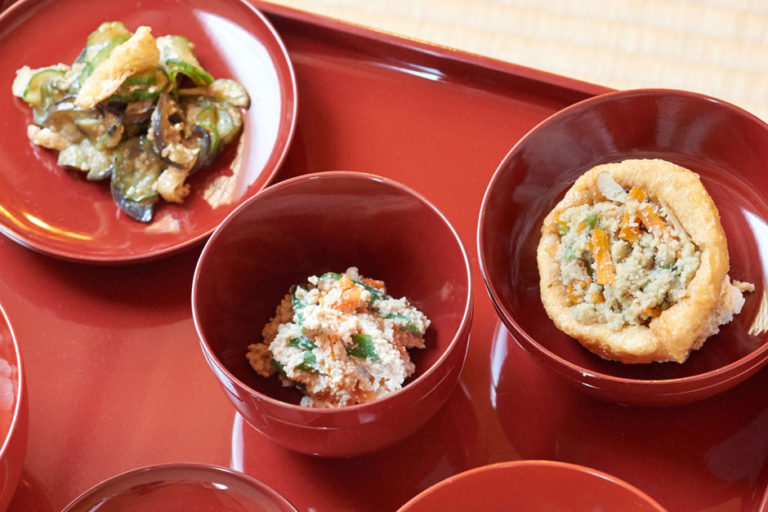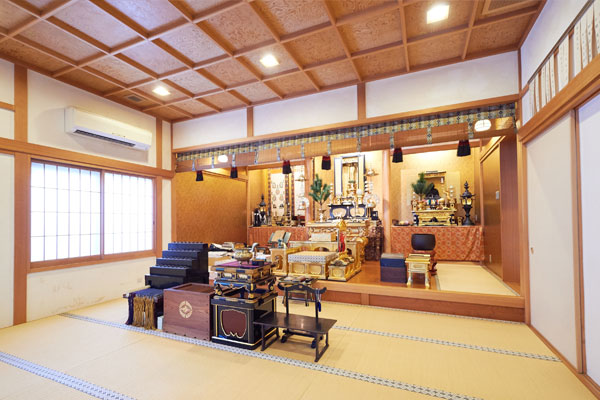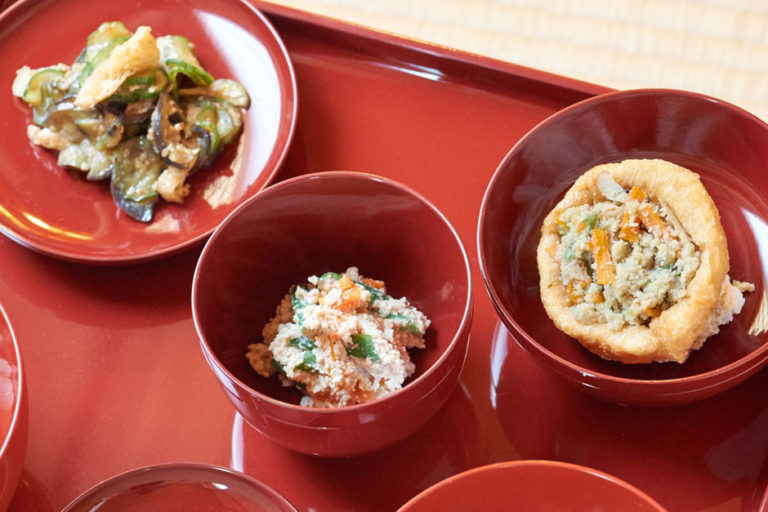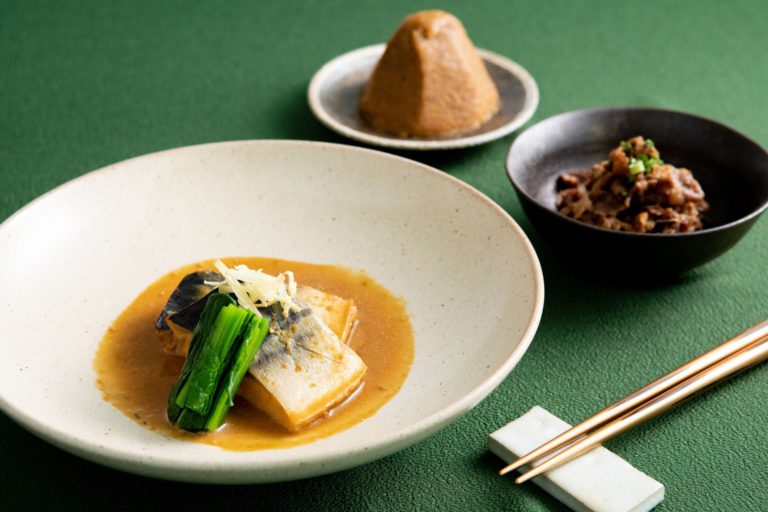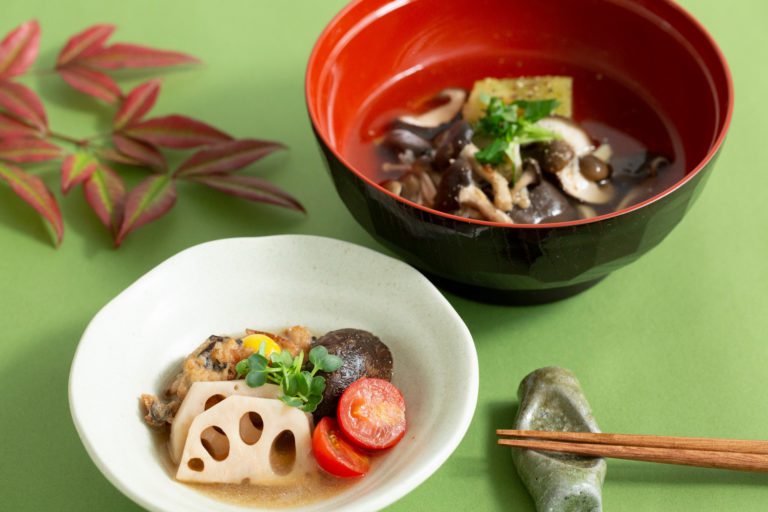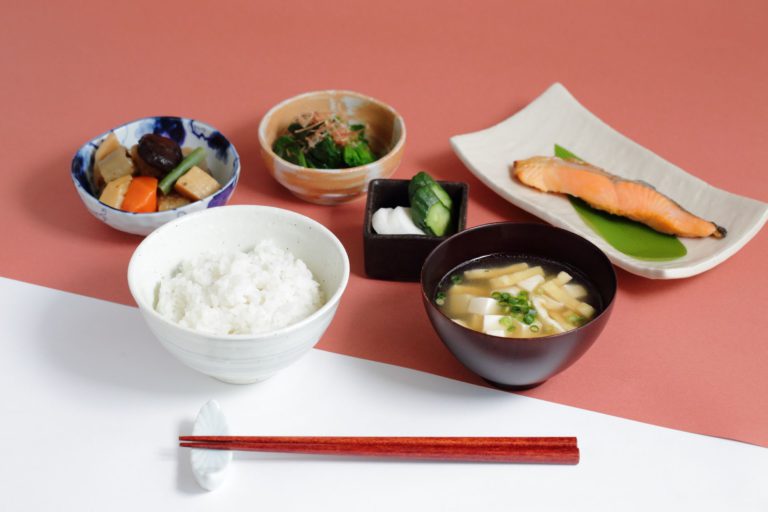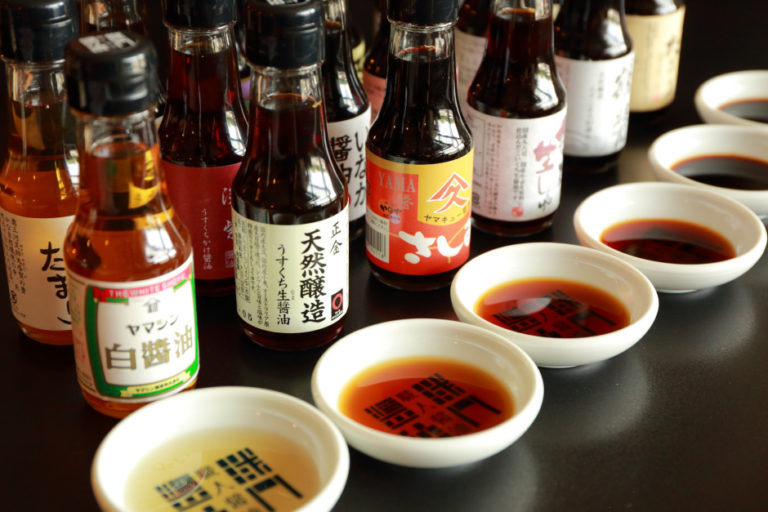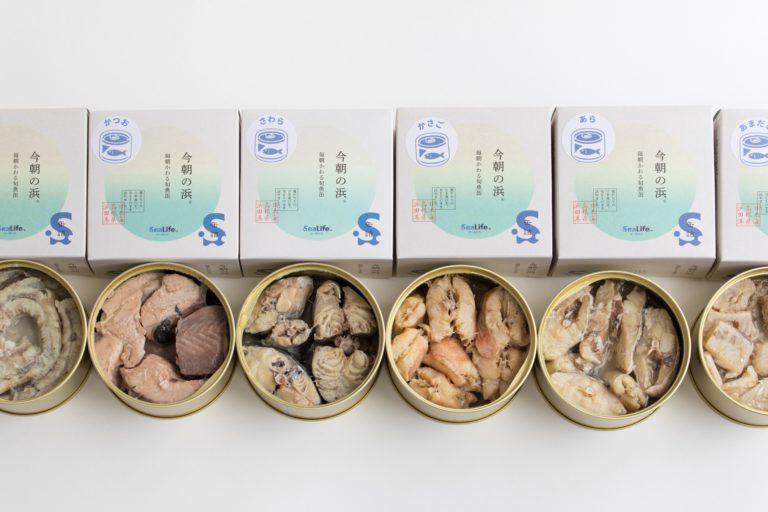Vegetarian Cuisine is the Stuff of Life
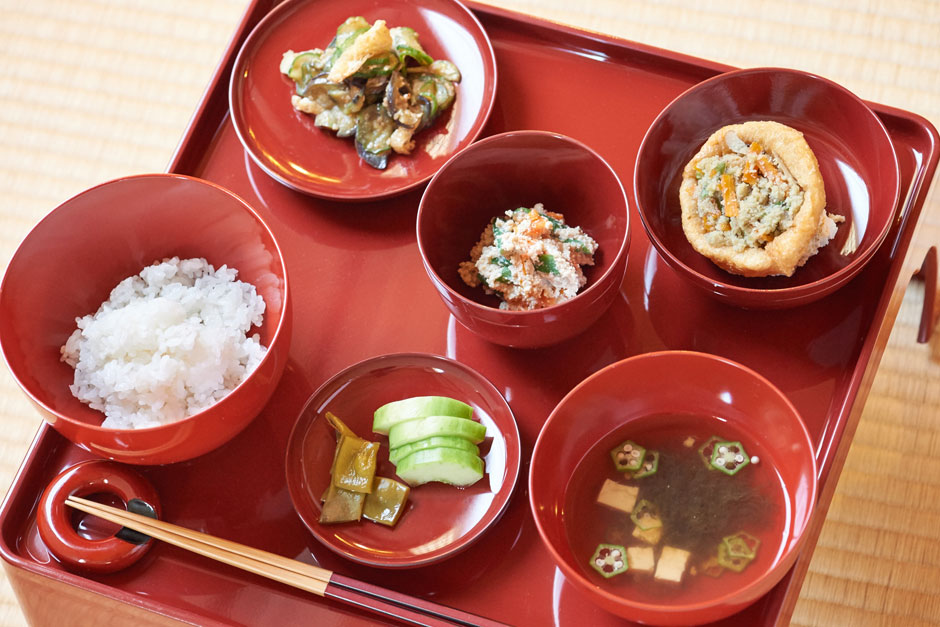
Shojin-ryori is believed to have crossed over to Japan from China in the 6th century, and was originally the food prepared for trainee Buddhist monks. Today, shojin-ryori is gaining plaudits around the world as part of a growing interest in Japanese food.
To find out more about shojin-ryori, SHUN GATE paid a visit to the Akasaka Teran cooking school at Jokokuji temple in Tokyo's Akasaka district. There we spoke to the director Masami Asao.
The distinction between preparation and consumption in shojin-ryori
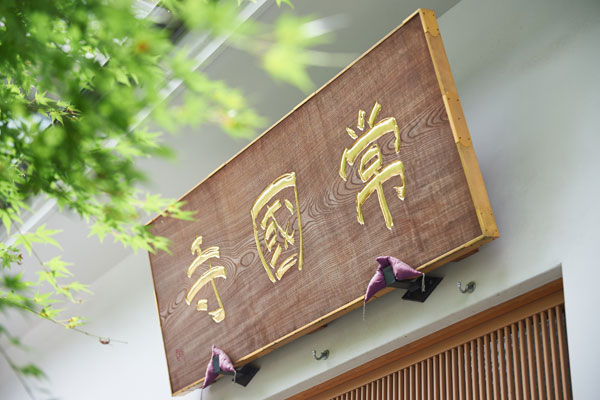
The Akasaka district in Tokyo boasts a number of temples from the Jodo-shinshu Buddhist sect (known as True Pure Land in English). One of these is Jokokuji, a tiny oasis of tranquility amidst the hustle and bustle of the metropolis. With a 350 year history, this temple has a special feel, almost as if time is standing still.
Asao is a practicing monk at Jokokuji. She is also a qualified nutritionist with an impressive breadth of knowledge in nutrition and dietetics, and runs the Akasaka Teran cooking school specializing in shojin-ryori.
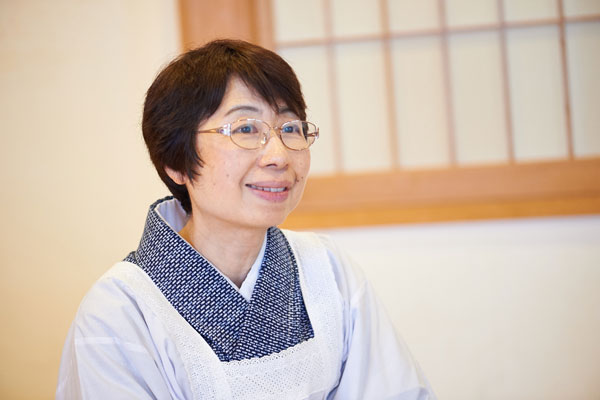
Shojin-ryori is best known for being healthy, but according to Asao it is much more than that, and she’s on a personal mission to tell the world about the many other benefits of this wonderful cuisine.
“One of the main principles of shojin-ryori is to develop a closer understanding and appreciation of the food you are preparing, and that extends to trying not let anything go to waste,” she explains. “For example, when you make soy milk from soybeans you get a residue called okara. Most people just throw this out. But okara still has a high level of nutrition in it, and you can use it to make some really nice dishes. There are always ways to use up things so that nothing goes to waste.”
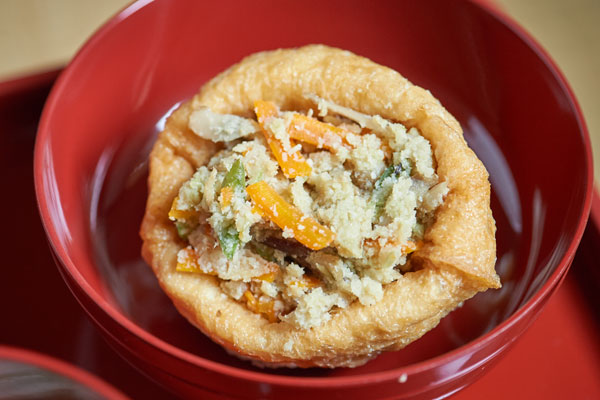
Shojin-ryori doesn’t waste anything, and at the same time it doesn’t cut corners. Modern conveniences such as the microwave oven and pre-prepared foods may make life easier, but they are the antithesis of shojin-ryori, where everything is prepared by hand with care and attention. And this, says Asao, is intrinsic to its appeal.
“Everyone should try their hand at making goma-dofu (tofu with sesame),” she says, “maybe not all the time, but at least once. The challenge is definitely worth it. Goma-dofu is possibly the most time-consuming component of shojin-ryori. It takes ages to pound the sesame seeds into a paste; maybe 20 minutes for a man and double that for a woman. But this period is significant in and of itself, for this is the time you spend appreciating the food that you’re about to consume, and contemplating the offering you’re going to make to Buddha or of the people you are going to feed.”
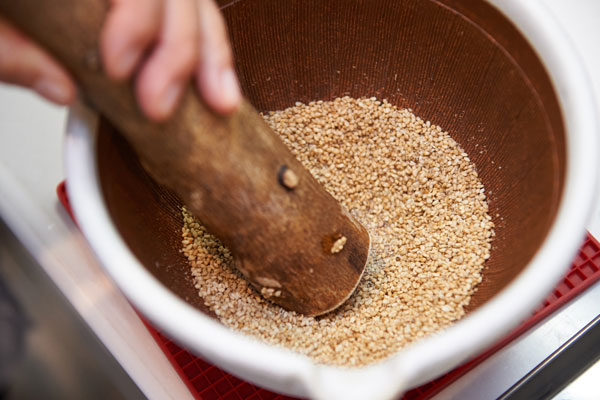
Those who consume the food benefit directly from the love and care that goes into preparing the food. Shojin-ryori places great importance on the appreciation expressed by both parties. This is based on the principles espoused by Dogen, who founded the Sotoshu sect of Zen Buddhism in the early Kamakura period. Dogen maintained that every act of every day was part of ascetic training, including the preparation and consumption of food.
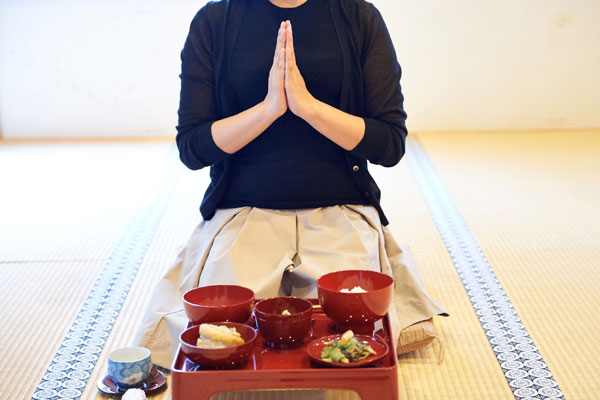
“Trainee Zen Buddhist monks are taught to recite the shokuji gokanmon before every meal,” says Asao. “This is an incantation of thanks for their food, as prescribed by the teachings of Dogen. In modern-day Japan we clasp our hands together and say itadakimasu before we begin eating. The word itadakimasu refers to “receiving the life” of the food that you are about to consume, and so we are giving thanks for the food in the Buddhist tradition.”
Asao prepares for us a classic shojin-ryori meal consisting of a soup and three side dishes together with rice, served on a beautiful tray.
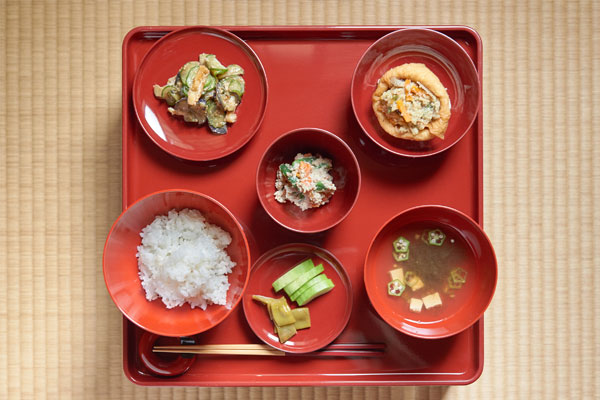
As we sit down to eat, we reflect on the care and dedication of Asao in preparing the meal, and our hands come together and the incantation of itadakimasu falls naturally from our lips.
Shojin-ryori is famed for the principles of simplicity and elegance. But it is also a cuisine that very much emphasizes the inherent flavor of each food type, and utilizes the natural textures of the food to great effect. It is truly an exercise in nourishment for the soul as well as for the stomach.
Below are some of the key principles of shojin-ryori as explained by Asao.
● Prohibited foods
Since Buddhism forbids the destruction of life, shojin-ryori is completely vegetarian and does not contain any meat or fish products. Shojin-ryori also eschews strongly aromatic vegetables such as garlic and spring onions (collectively known as gokun). Some say that this is because the lingering odors interfere with the training that monks undertake after their meals.
● Seasonings are designed to enhance the inherent flavors of the food
Shojin-ryori is grounded in the gomi-goho principle of using only five basic seasonings and five different methods of preparation. This emphasizes the importance of adding minimal seasoning and selecting the most appropriate cooking method to enhance the natural flavor of the food.
● Bowls and plates have assigned roles and should not be overfilled
Normally only five different types of dishes are used in shojin-ryori: a rice bowl for the rice, a soup bowl for the soup, a smaller bowl for vegetables with dressing, a saucer or shallow dish for the boiled or fried vegetables, and a small saucer for pickles. Thus each dish has a specific component of the meal assigned to it. To avoid potential wastage, dishes should never be overfilled.
To eat is to appreciate life
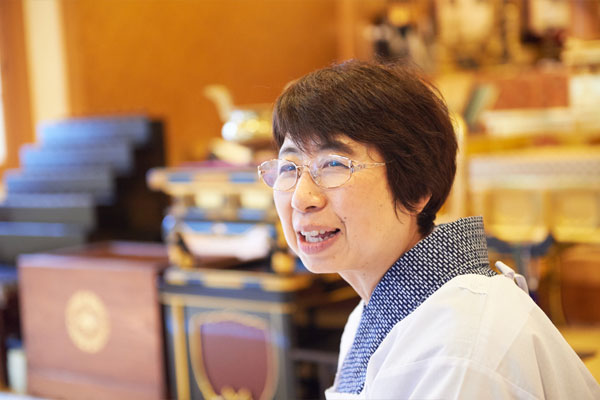
Food is an essential part of life.
It is central to our very existence. But because eating is such an everyday occurrence, we sometimes take our food for granted, and forget to be thankful for it.
“Food is nourishment for the soul as well as for the body,” notes Asao. “The food we eat today shapes who we are tomorrow and who we will be in a few months’ time. If you keep other people in mind as you prepare food and as you eat, it makes you healthier in mind and spirit. The beauty of shojin-ryori is that it teaches you to treat food with respect. And that’s something that I really want to share with the world,” she concludes.
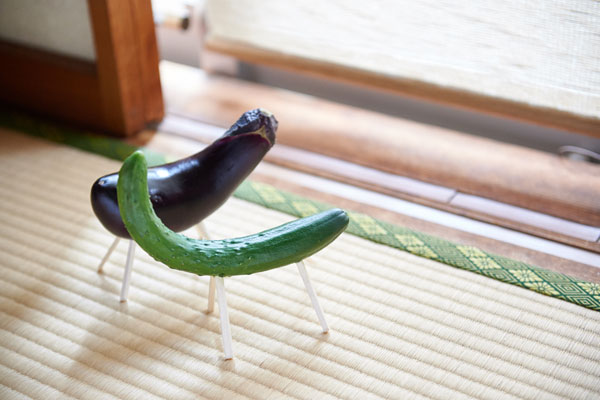
Many people come into contact with shojin-ryori during the Obon festival in summer, which honors departed ancestors. So this summer, why not have some shojin-ryori and take the opportunity to approach your food from a whole new perspective, one that is predicated on respect for life.

